Past, Present, and Future Generations
Generations past did not see huge technological advances in their lifetime. Workforce management was much simpler. Their expectation was a fair wage for a hard day’s work. For that reason a fair wage was enough to motivate most workers. As technology races forward, it impacts each successive generation in new ways. The common thread is that each generation must be more adaptable than the last to keep up with the evolution of technology in the workplace. In the chart below, data from 2 sources is combined to disply the generational makeup of the global workforce. The generational range definitions used are from Pew Research Center.
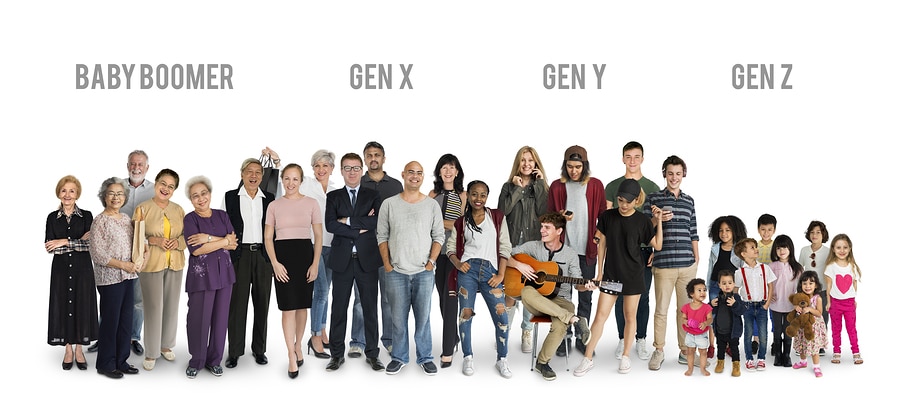
Defining the Generations
Very few truckers who are in their 70’s are still driving for a living. They have a far different outlook on work and life than younger drivers. Likewise, they are a bit more resistant to change than younger generations. For many of them, the ELD mandate was the straw that broke the camel’s back. As more routine driver tasks move from paper to digital formats, Builders and Boomers can either go with the flow or be left behind.
The trucking industry likely has fewer Gen-Z’s than the 24% shown in the workforce breakdown because less than half of them are old enough to drive. In contrast, they will be the next defining challenge to integrate into the fleet workforce. Each group has its own priorities and values. They have been shaped by fast-developing technology, an ever changing economy, and global vs local perspectives.
Managing fleet personnel well is dependent upon understanding these generational differences. Certainly, that is the key to recruitment, training, benefit and reward strategies that will resonate across generations. Ultimately, success is tied to keeping drivers happy and retaining them long term. Phyllis Weiss Haserot, author of “You Can’t Google It!: The Compelling Case for Cross-Generational Conversation at Work” identifies the traits of each generation as well as the fears that influence them. Her findings broken down in the charts below, along with a little common sense, reveal some interesting possibilities.
Baby Boomers
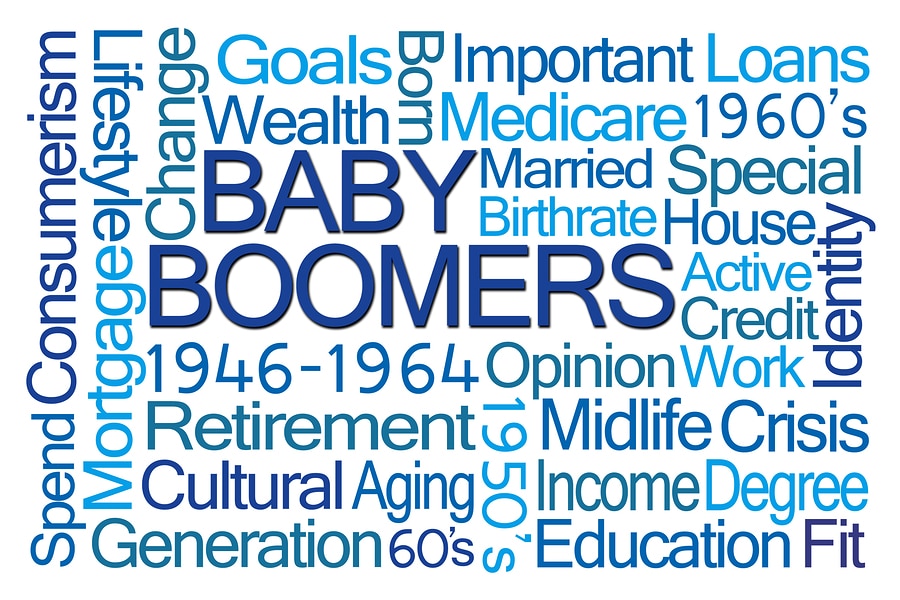
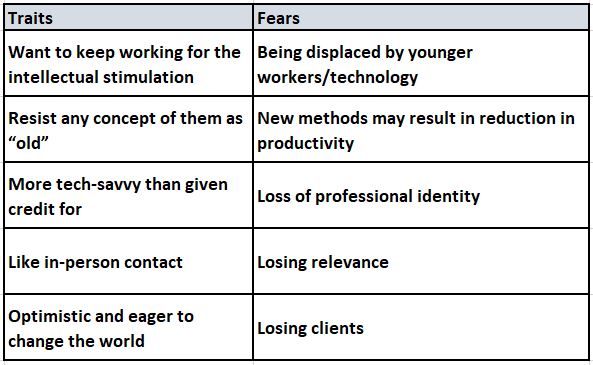
Not surprising, Baby Boomer workplace traits and fears are tied to their physical age. They are also your most experienced drivers. Younger workers can learn a lot from them about staying safe and productive on the road from them. Boomers can also teach younger workers about person to person contact and relationship building by example. Boomers can probably learn a lot from younger workers about work/life balance. Perhaps turning over some training duties to your Boomers will benefit everyone.
Boomers are open and adaptable to new technology but may tend to be skeptical until the new tech proves its value. Including them early in the process when introducing new technology will make them feel valued. Furthermore, they will better understand the value the technology brings and become your champions for the changes proposed.
Generation X
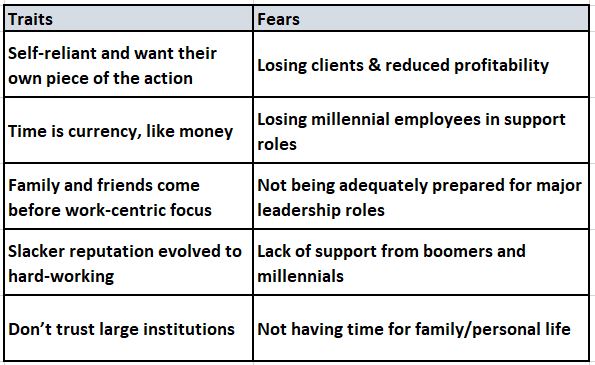

From the traits listed, it would seem Gen-Xers feel like it’s them against the world. That can be a difficult dynamic to address for drivers who spend a good deal of their time alone in the field. Extra effort is needed to make them feel part of the team. They have an entrepreneurial spirit in the workplace tempered by a friends and family first attitude.
Pairing them with Boomers for training may balance their fears of acceptance by Boomers, while pairing them to train and work alongside Millennials may balance their fears of losing the support of Millennials they work with. What seems most important is to foster their relationships with other generational groups as they are not likely to choose those relationships for themselves.
Perhaps a team challenge incentive with members of each generation on each team. Working together toward a shared goal will help bridge the generational gaps. Something as simple as a Boomer asking a Gen Xer for help using a new app can make them feel valued and boost their morale.
Generation Y Millennials
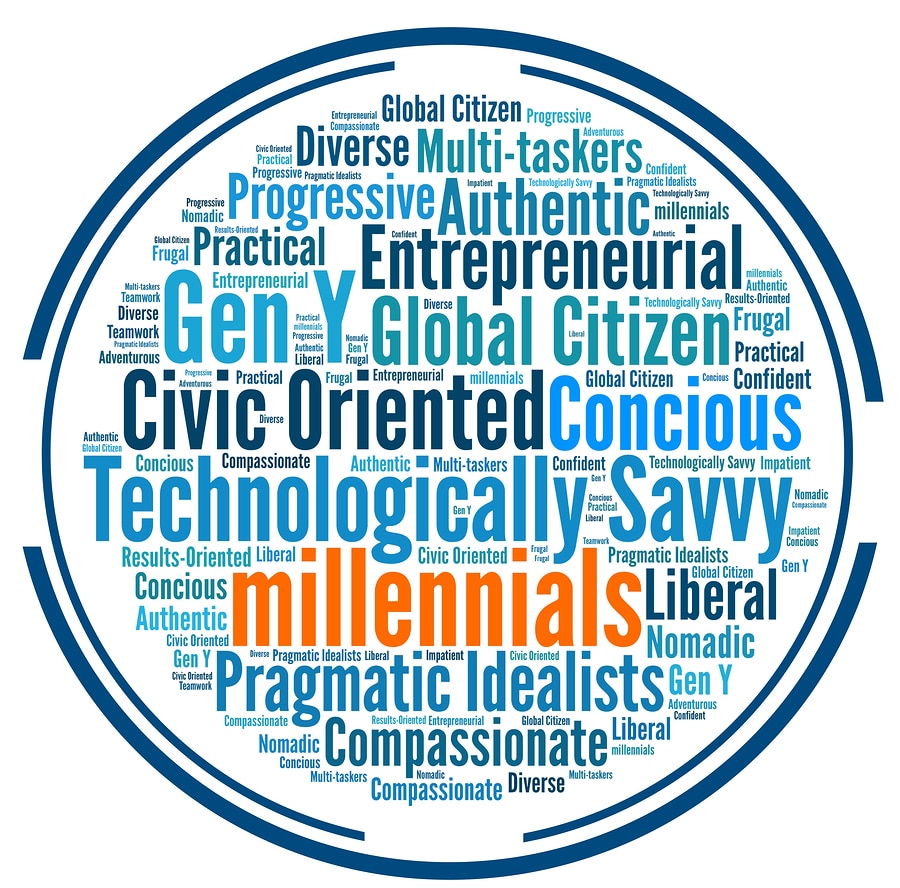
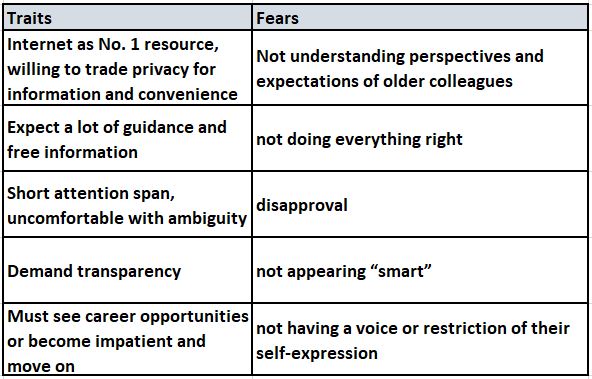
Millennials will respond best to web-based training programs. They are more comfortable with learning online than in a classroom or one on one training. They need highly focused, but brief training sessions, and lots of e-resources to get their questions answered.
Driver safety scorecard performance incentives and gamification apps will resonate with Millennials. This can open the lines of communication to bring them into the team environment. Like the Gen-Xers, making them feel they are part of the team can be challenging.
Recognition by their Gen-X and Boomer supervisors is critical to their motivation. A clearly defined career path will keep them on track. If they feel they are valued by management and co-workers, and achievement of benchmarked goals clearly offers a path for career advancement, they are more likely to stay and be successful.
Generation Z
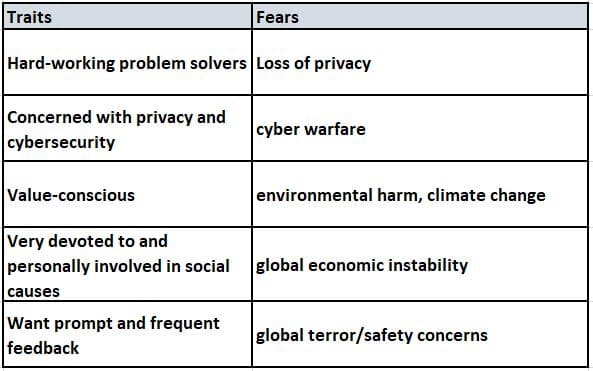
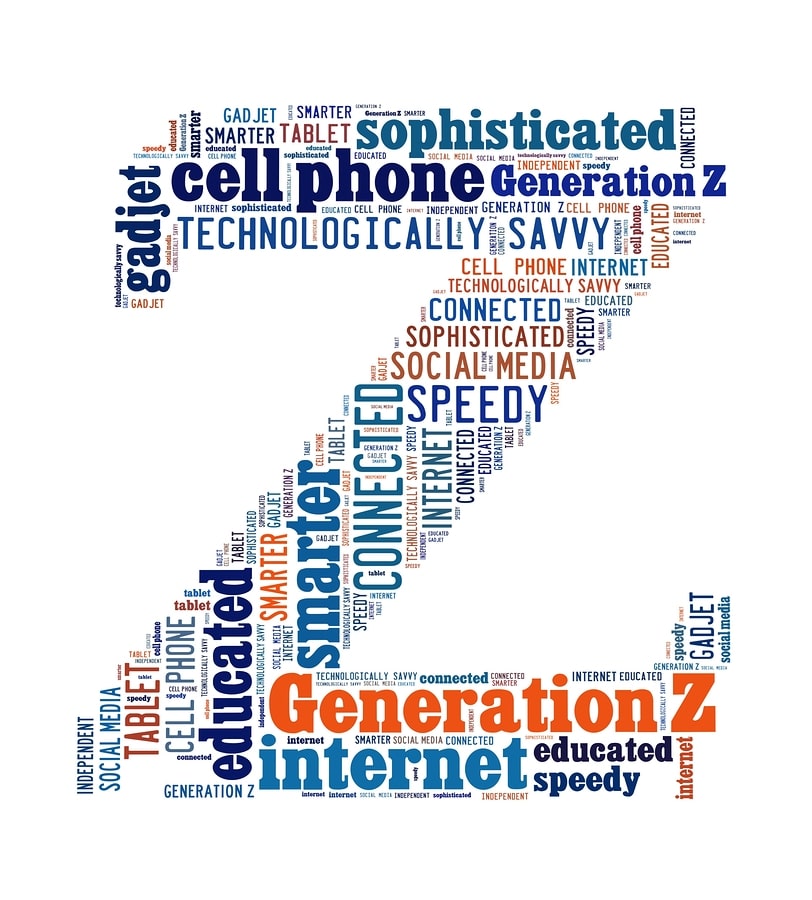
More than any of the other generations, Gen-Zers are invested in and place a high priority on making the world a better and safer place. They have been exposed since birth to issues like terrorism, global warming, and changing political correctness.
Gen-Zers have the skills to be great team players. Technology like smartphones and tablets have always been part of life for them, and new technology advancements are their norm, expected as sure as daybreak. AI and robotics replacing manual labor is a very real possibility in their lifetimes.
It may be too soon to define strategies to attract and retain this up-and-coming segment of the workforce. In fact, it may be too soon to predict if driving will continue to be part of the job. For that reason, it is time to begin redefining what tasks will take the place of driving when the vehicles in our future are driverless?
In any case, one thing that will be critical to Gen-Z is who we are as employers. Our corporate attitudes regarding our local and global impact, both good and bad will be important to them. Are we as corporate citizens doing our part to keep the environment clean? Do we take a stand regarding social injustice, help the disadvantaged, and keep our data secure? If not, they will find another employer that does.
Conclusions
Retaining drivers across all the generations is dependent upon creating a company culture with a shared purpose, open communication, and respect for individualism. Understanding the traits and fears associated with each major group is the gateway to creating that culture. Using the strengths of one group to relieve the fears of another is just good business. With a little creativity and intentional focus, an inclusive culture where drivers of all ages work together productively is achievable.

